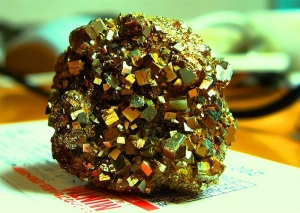Friday, October 11. 2013
Pre-Green Fool's-Gold and Post-Green Fair-Gold OA
Trackbacks
Trackback specific URI for this entry
No Trackbacks
Comments
Display comments as
(Linear | Threaded)
Thanks for your interesting ideas on open access publishing. This actually seems very related to an recent post by Chris Sampson here: http://chrissampson.me/2013/09/18/one-suggestion-for-a-new-model-of-academic-publishing/.
Interestingly, if the publishing role for publishers were to disappear as you describe, the peer review platforms that would be needed are popping up all around us these days. See e.g. my posts here for examples: http://thomas.arildsen.org/2013/08/01/open-review-of-scientific-literature/ and http://thomas.arildsen.org/2013/09/16/publishing-models-with-open-review/. Particularly, Pandelis Perakakis from Open Scholar made some encouraging comments here that might interest you: http://thomas.arildsen.org/2013/10/04/third-party_review_platforms/comment-page-1/#comment-37.
Interestingly, if the publishing role for publishers were to disappear as you describe, the peer review platforms that would be needed are popping up all around us these days. See e.g. my posts here for examples: http://thomas.arildsen.org/2013/08/01/open-review-of-scientific-literature/ and http://thomas.arildsen.org/2013/09/16/publishing-models-with-open-review/. Particularly, Pandelis Perakakis from Open Scholar made some encouraging comments here that might interest you: http://thomas.arildsen.org/2013/10/04/third-party_review_platforms/comment-page-1/#comment-37.
EnablingOpenScholarship (EOS)
Quicksearch
Materials You Are Invited To Use To Promote OA Self-Archiving:
Videos:
audio WOS
Wizards of OA -
audio U Indiana
Scientometrics -
The American Scientist Open Access Forum has been chronicling and often directing the course of progress in providing Open Access to Universities' Peer-Reviewed Research Articles since its inception in the US in 1998 by the American Scientist, published by the Sigma Xi Society.
The American Scientist Open Access Forum has been chronicling and often directing the course of progress in providing Open Access to Universities' Peer-Reviewed Research Articles since its inception in the US in 1998 by the American Scientist, published by the Sigma Xi Society.
The Forum is largely for policy-makers at universities, research institutions and research funding agencies worldwide who are interested in institutional Open Acess Provision policy. (It is not a general discussion group for serials, pricing or publishing issues: it is specifically focussed on institutional Open Acess policy.)
You can sign on to the Forum here.
Archives
Calendar
|
|
May '21 | |||||
| Mon | Tue | Wed | Thu | Fri | Sat | Sun |
| 1 | 2 | |||||
| 3 | 4 | 5 | 6 | 7 | 8 | 9 |
| 10 | 11 | 12 | 13 | 14 | 15 | 16 |
| 17 | 18 | 19 | 20 | 21 | 22 | 23 |
| 24 | 25 | 26 | 27 | 28 | 29 | 30 |
| 31 | ||||||
Categories
Blog Administration
Statistics
Last entry: 2018-09-14 13:27
1129 entries written
238 comments have been made
 I would be surprised if there weren't subscription journals that would have accepted the
I would be surprised if there weren't subscription journals that would have accepted the 

